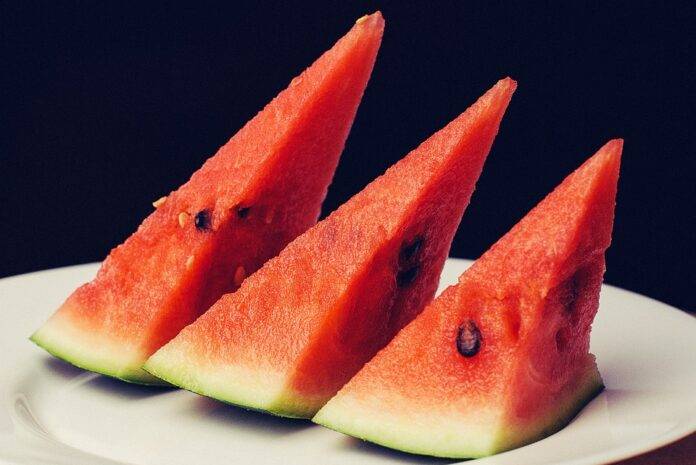Introduction
Watermelons, known for their refreshing taste and high water content, are a beloved fruit worldwide. As global demand for watermelons increases, so does the need for effective crop protection strategies to ensure higher yields and maintain quality. In this report, we will explore the top ten crop protection strategies that farmers can implement to optimize watermelon production. The goal is to provide detailed insights into these strategies, backed by relevant data and examples.
1. Integrated Pest Management (IPM)
Integrated Pest Management (IPM) is an ecological approach that combines various management practices to control pests while minimizing environmental impact. This strategy involves monitoring pest populations, using biological control agents, and applying chemical controls only when necessary.
For example, farmers can introduce beneficial insects such as ladybugs and lacewings, which prey on aphids and other harmful pests. According to the University of Florida, IPM can reduce pesticide use by up to 50%, leading to cost savings and safer produce.
2. Crop Rotation
Crop rotation is the practice of alternating the types of crops grown in a particular area across seasons. This method helps disrupt pest and disease cycles, improving soil health and nutrient availability.
Research from the University of Illinois indicates that rotating watermelons with crops like corn or legumes can reduce the incidence of soil-borne diseases such as Fusarium wilt. Additionally, a study revealed that crop rotation can enhance soil organic matter by 3-5%, which is crucial for watermelon growth.
3. Disease-resistant Varieties
Planting disease-resistant watermelon varieties is one of the most effective strategies for ensuring higher yields. Breeders have developed several varieties that can withstand common diseases such as powdery mildew, downy mildew, and fusarium wilt.
For instance, the ‘Sugar Baby’ and ‘Crimson Sweet’ watermelon varieties are known for their resistance to certain diseases. According to the American Society for Horticultural Science, planting these varieties can lead to yield increases of up to 20%, significantly benefiting farmers financially.
4. Proper Irrigation Management
Watermelons require consistent moisture for optimal growth, but over-irrigation can lead to root rot and other diseases. Implementing proper irrigation management practices, such as drip irrigation, can help maintain soil moisture levels without over-saturating the plants.
According to a study published in the Journal of Irrigation and Drainage Engineering, drip irrigation can increase watermelon yields by as much as 30% compared to traditional irrigation methods. Additionally, this approach reduces water usage by up to 50%, making it both economically and environmentally beneficial.
5. Fertilization Strategies
Balanced fertilization is essential for watermelon crops. Farmers should conduct soil tests to determine nutrient levels and apply fertilizers accordingly. A study conducted by the Texas A&M AgriLife Extension found that applying a nitrogen-phosphorus-potassium (NPK) fertilizer at the right growth stages can enhance watermelon yields by up to 40%.
Moreover, incorporating organic fertilizers such as compost can improve soil health and increase nutrient availability. Research indicates that organic amendments can boost watermelon fruit size and sugar content, leading to better market prices.
6. Weed Management
Weeds compete with watermelon plants for nutrients, water, and light. Effective weed management is crucial for maximizing yields. Farmers can use a combination of pre-emergent herbicides and mechanical weeding to control weed populations.
According to the International Journal of Agronomy, implementing a robust weed management strategy can increase watermelon yields by 15-25%. Additionally, mulching can suppress weed growth while retaining soil moisture, further enhancing crop performance.
7. Pest Control Measures
Pest control is vital for protecting watermelon crops from harmful insects like cucumber beetles, aphids, and spider mites. Farmers can employ various pest control measures, including chemical pesticides, biopesticides, and cultural practices.
A study from the University of California found that using biopesticides such as neem oil can effectively reduce pest populations while being less harmful to beneficial insects. This approach can lead to increased fruit yield by approximately 20%, providing a significant economic advantage.
8. Monitoring and Surveillance
Regular monitoring and surveillance of watermelon crops are critical for early detection of pests and diseases. Farmers can utilize tools such as pheromone traps and scouting techniques to assess pest populations and crop health.
According to the University of Georgia, timely monitoring can prevent yield losses of up to 30%, allowing farmers to take action before infestations become severe. Investing in monitoring equipment can thus lead to substantial financial returns in the long run.
9. Soil Health Management
Healthy soil is the foundation for productive watermelon crops. Implementing soil health management practices, such as cover cropping and reduced tillage, can enhance soil structure, fertility, and microbial activity.
Research from the USDA Natural Resources Conservation Service indicates that improving soil health can lead to yield increases of 10-15%. Furthermore, healthier soils can enhance water retention, reducing the need for irrigation and lowering production costs.
10. Education and Training
Continuous education and training for farmers are essential for implementing effective crop protection strategies. Participating in workshops, attending agricultural fairs, and collaborating with extension services can provide valuable insights into the latest practices and technologies.
According to a report by the Food and Agriculture Organization (FAO), farmers who engage in regular training programs can experience yield increases of 20-30%. Investing in education not only enhances crop protection but also promotes sustainable farming practices.
Conclusion
Implementing effective crop protection strategies is essential for achieving higher yields in watermelon production. By adopting practices such as Integrated Pest Management, crop rotation, and proper irrigation management, farmers can enhance their productivity while minimizing environmental impact.
The combination of disease-resistant varieties, balanced fertilization, and robust pest control measures further contributes to successful watermelon farming. Additionally, monitoring soil health and investing in education can create a sustainable farming environment that benefits both farmers and consumers.
By adopting these top ten watermelon crop protection strategies, farmers can position themselves for success in an increasingly competitive market, ultimately leading to improved yields and profitability.
Read: The Global Watermelon Industry in 2025 – Market Trends, Challenges, and Future Outlook



